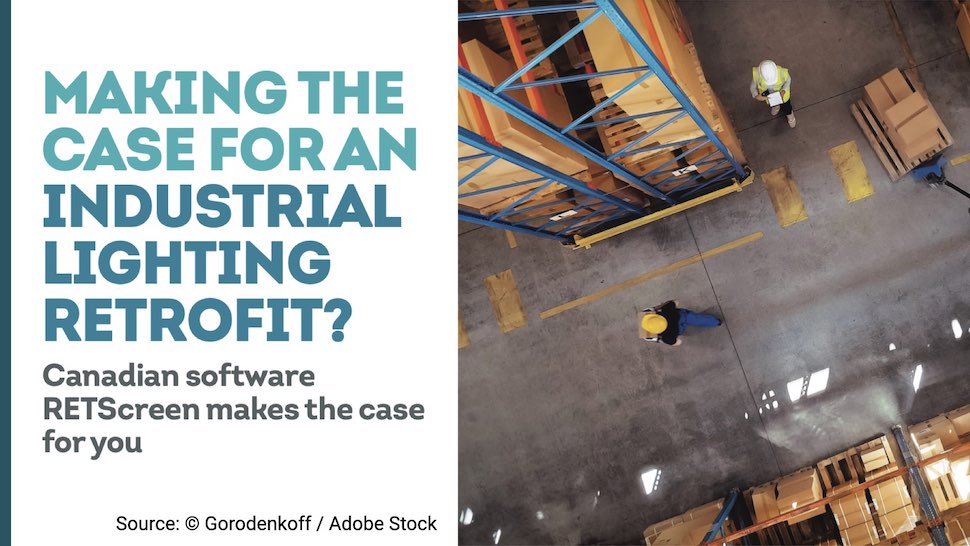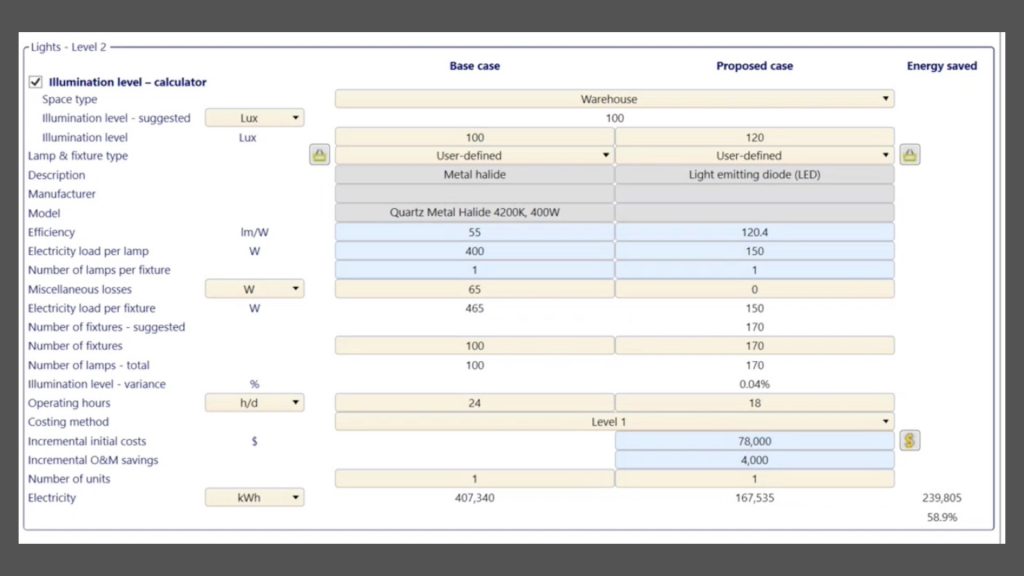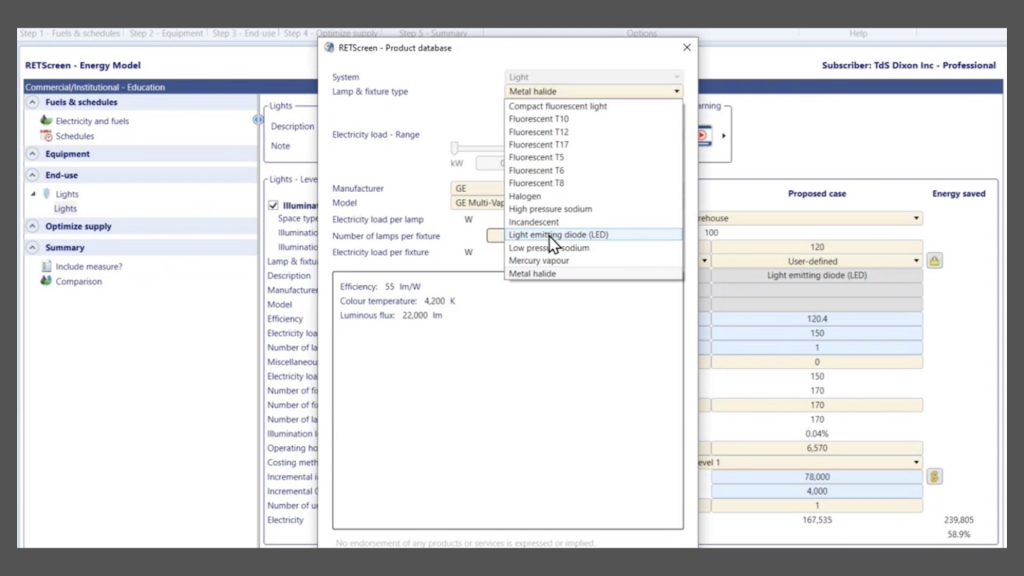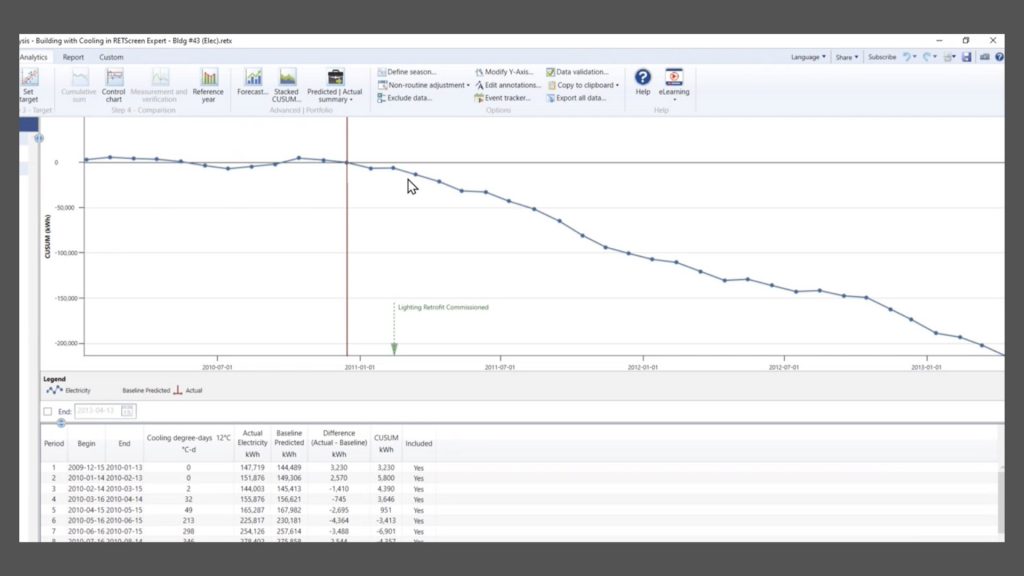
Articles
Features
Articles
Lighting & HVAC
Software
Making the case for an industrial lighting retrofit?
February 13, 2023 | By Anthony Capkun
Canadian software RETScreen makes the case for you

February 13, 2023 – Let’s say you’re persuading a client to move forward on an industrial lighting retrofit because, for whatever reason, this facility is one of the few that has not yet heard about LED lighting!
You could open a new spreadsheet and enter values for the existing lighting scheme in one column (in our example, metal halides), and do a comparison with LED lighting in a second column.
But what if you could take that a step further and be even more persuasive? What if there was a tool that could not only easily and quickly help you determine the feasibility of the retrofit project, but also the retrofit’s impact on the facility’s heating and cooling, as well as payback?
Enter the RETScreen software platform—a Made-in-Canada solution that is used by over 750,000 people around the world to take a data-driven approach to managing energy, assessing retrofits, and so much more.
Stephen Dixon of Knowenergy has accumulated over 40 years of energy management experience, serving a diverse range of industrial, commercial, institutional, and utility organizations. And the RETScreen software platform is among his favourite tools, especially when considering our lighting retrofit example.
“First of all, we can use RETScreen’s Feasibility tool to do a fairly simple calculation,” he says, clicking away at his keyboard. “Let’s say you’re going from a 400W fixture with 65 watts in the ballasts—meaning 465 watts per fixture—and you’re moving to an LED fixture with 150W total load… RETScreen allows you to calculate the energy savings very quickly.”
RETScreen also allows you to input the efficacy—the lumens per watt—from the existing fixtures to compare against the proposed LED fixtures. When you want to achieve a desired illumination level with your retrofit, RETScreen will even suggest the number of LED fixtures you may need to achieve it.
“You can absolutely do a one-for-one swap,” Dixon notes, “But the software will warn you when your proposed case reduces your light level. In that case, maybe you select a different fixture—one with a higher lumen output.”
He points out that RETScreen has “some nice product databases” from which you can pick both existing and proposed fixtures, along with costs for those things.
“The contractor may be preparing a proposal, and they may already know which fixtures they’re going to propose for the retrofit, but they need to get some data on the existing fixtures to do their calculations. That’s where RETScreen’s databases come in handy,” Dixon says.
RETScreen takes over the calculations and, in our industrial lighting retrofit example, we see that “I am now using about 38.9% of the energy post-retrofit while maintaining light levels”. Dixon looks again at his monitor. “Actually, I’ve improved the light level.”
“That’s the neat thing about RETScreen’s Feasibility tool,” he says. “You are able to start putting together ideas and adding some numbers to determine what looks promising.”
Impact on other systems
The other thing RETScreen does really well, Dixon notes, is connecting the dots between our proposed industrial lighting retrofit and other facility systems.
“Switching from metal halides to LEDs will have an impact on the heating and cooling in the facility and, in fact, RETScreen can calculate that impact for you,” Dixon says. “It’s a feature you can use, or not use. In many situations, however, it is to your advantage to do that calculation because savings on the cooling load significantly outweigh any additional heating cost.”
Determining payback
In our rudimentary retrofit example above, Dixon determines a simple payback of 2.1 years: “And that’s pretty attractive but, for some people, it may not be attractive enough.”
To make it more attractive, then, you pop over to the Financing screen. “Maybe I’ll get some money from my utility for this project; say, a $15,000 incentive. OK, I punch in that value, and now my simple payback is down to 1.7 years. Not bad.”
But Dixon believes in taking things further than just simple payback. “RETScreen calculates the Benefit-to-Cost Ratio, which I like to call the Savings-to-Investment Ratio,” he says. “Let’s assume our retrofit has a 10-year project life. After those 10 years, I’m going to get four times [4x] as much money back. Now that’s a very compelling project.”
Another way of putting it: “Financial people will ask ‘What is the internal rate of return on the equity on that thing you own?’,” Dixon says. “Well, with our industrial lighting retrofit, RETScreen shows us a 62% internal rate of return after 10 years! How many of us have investment portfolios that are as good as that?”
So aside from tackling technical calculations fairly easily, RETScreen gives you the ability to create a strong financial case for a project that goes well beyond simple payback, “which often understates the value of these investments”.
You’ll find all Back Issues of Electrical Business Magazine in our Digital Archive.
Print this page




